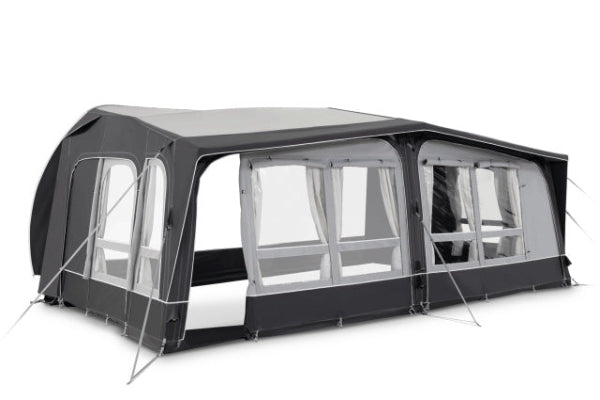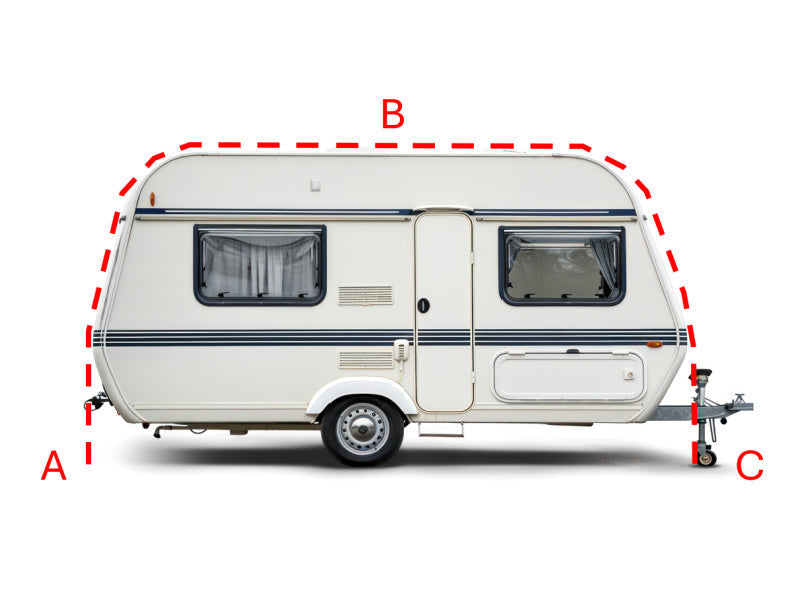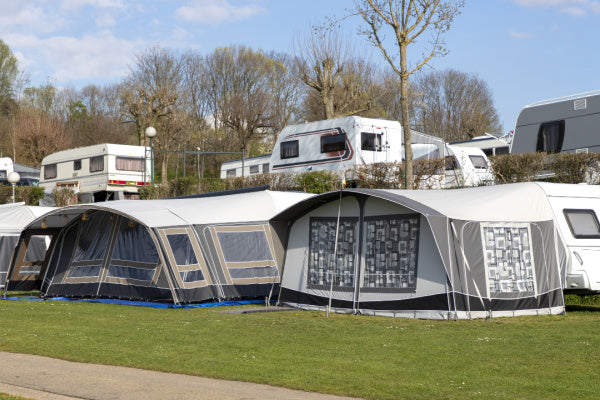Inflatable Tents: Are They Safe for Camping?
Pitched a glamping tent or pod, only to wake up mid-squish from a deflating air beam? Don’t worry—inflatable tents are safe (when used right). They’re sturdy, comfy, and weather-resistant—but yes, they can pop. Read on for tips, wild weather truths, and how to avoid turning your tent into a sad balloon.
The Core Safety Question: Wind Resistance and Structural Integrity
How Air Tents Handle Strong Winds
Inflatable tents, also known as air beam tents, are built to stand up to wind and rain. Their structure relies on flexible air beams that, when fully inflated, hold shape well and resist collapse.
Proper inflation and secure anchoring are essential. When done correctly, these tents perform impressively in blustery conditions. You don’t need to be an expert to keep them stable—just follow a few smart steps.

The Advantage of Flexibility: Bending vs. Breaking
One key advantage of air beams is their ability to flex under pressure. Where rigid poles might snap, inflatable beams bend and return to shape. This flexibility absorbs wind shock better than traditional poles.
It’s a bit like comparing a willow tree to a brittle stick—the one that bends is far more likely to survive the storm.
Aerodynamic Designs and Their Role in Stability
Most modern air tents are designed with aerodynamics in mind. Their curved, low-profile shapes help wind flow over rather than against the structure.
By reducing resistance points, the design keeps the tent grounded. It’s not just about materials—shaping matters.
The Importance of Proper Guy Lines and Pegging
Even the best-designed tent needs proper anchoring. Guy lines and stakes aren’t optional—they’re essential.
Make sure all pegging points are secured tightly and adjust guy lines as needed. Skipping this step is one of the most common reasons tents fail in wind.
Inflatable Tents vs. Pole Tents in Storms
Why Rigid Poles Can Be a Weak Point
Rigid pole tents offer strength but not flexibility. In high winds, they can bend or snap—especially under uneven pressure or shifting terrain.
Once a pole breaks, the whole structure is compromised. It’s not just an inconvenience; it can end your trip early.
The Myth of Air Tents Being Weaker
There’s a persistent belief that inflatable tents are weaker, but this isn’t backed by real-world use. In fact, their flexibility and design give them the edge in many tough conditions.
Rather than break under stress, they move with it. That makes a difference when weather turns rough.
The Critical Role of Quality Materials in Both Tent Types
Whatever the type—air beam or pole—the real difference lies in material quality. Durable fabrics and reinforced joints make any tent better.
Cheap builds fail faster. Whether it’s an inflatable or traditional model, invest in quality for safety.

Addressing Common Concerns: Punctures, Leaks, and Reliability
What is the Real Risk of a Puncture?
Punctures are a real possibility, but they’re not as common as some fear. Modern air tents are built with puncture-resistant materials and often include protective outer layers around air beams.
If a puncture does happen, it’s rarely a trip-ending issue. Most can be patched quickly with basic gear.
The Durability of Modern Air Beam Construction
Today’s air beams aren’t just glorified pool toys. They’re made from strong, multi-layered fabrics designed to take abuse.
Many include a protective sleeve around the beam, adding another layer of security. These tents are made for the outdoors, not just fair weather.
The Most Common Causes of Leaks and Deflation
Leaks are more likely to come from valve issues or over-inflation than sharp objects. A poorly sealed or dirty valve can slowly release air without you noticing.
Sharp campsite debris is another risk—but one that’s easy to manage. Always inspect your pitch before setup.
How to Prevent Punctures Through Proper Site Selection and Care
The ground beneath your tent matters. Avoid rocky or rough patches, and clear debris before setting up.
Use a groundsheet or footprint for extra protection. These small steps dramatically reduce the chance of punctures.
On-the-Spot Repairs and Maintenance
Using a Puncture Repair Kit for Quick Fixes
Most inflatable tents come with a repair kit. If not, buy one separately—it’s worth it.
Locate the leak, clean the area, and patch it up. You can be back in action in minutes if you're prepared.
How to Isolate and Replace a Damaged Air Beam
Some tents let you remove or replace individual beams. This feature varies, but when available, it’s a major plus.
Knowing how to isolate a beam can save your trip. A spare beam is great insurance on longer adventures.
The Importance of Carrying a Pump with a Pressure Gauge
Inflation matters more than most think. Too much pressure can stress seams; too little affects stability.
A pump with a gauge keeps inflation in the safe zone. Don’t rely on guesswork—this simple tool makes a big difference.
The Verdict: Are Inflatable Tents a Safe Choice?
Weighing the Pros: Ease of Setup, Resilience in Wind
Inflatable tents are fast to set up—some take only minutes. They’re also resilient in wind, as long as they’re pegged properly.
Their structure bends rather than breaks, offering better durability in some storm scenarios. They’re great for solo campers, families, and glampers alike.

Weighing the Cons: Weight, Cost, and Potential for Punctures
Air tents can be heavier than traditional models. They often cost more too.
And while punctures are rare, they’re possible—especially without care. Still, these downsides are manageable with the right gear and attention.
Why a High-Quality Air Tent is a Reliable and Safe Option for Most Campers
The short answer: Yes, inflatable tents are safe.
Pick a quality tent, learn how to set it up properly, and pack a repair kit. With just a bit of preparation, you’ll enjoy the comfort and convenience of a sturdy air tent—without the worry.
Other content you might like:
- Why Shouldn't You Touch The Inside Of A Tent?
- Do Glamping Pods Make Money?
- Is Glamping A Good Investment?
- What Is The Average Occupancy Rate For Glamping?
- How Much Does A Glamping Pod Make?
- What Is A Good Airbnb Occupancy?
- What Is The Demand For Glamping?
- How Do You Stay Warm In Glamping?
- Can You Sleep With An Electric Heater In A Tent?





Leave a comment